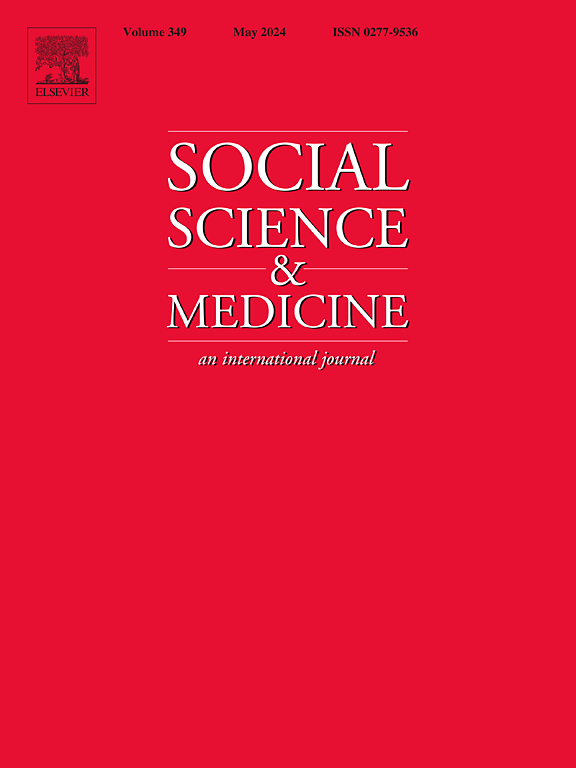Impact of the 2009 WIC revision on infant and maternal health: A quasi-experimental multi-state study
IF 4.9
2区 医学
Q1 PUBLIC, ENVIRONMENTAL & OCCUPATIONAL HEALTH
引用次数: 0
Abstract
Improving food security and dietary quality during pregnancy is vital for maternal and infant health. Poor nutrition can lead to adverse fetal development and complications for women. In 2009, the Special Supplemental Nutrition Program for Women, Infant, and Children (WIC), a US safety net program for low-income pregnant, breastfeeding or postpartum women and young children, was revised to improve dietary quality, promoting intake of whole grains, fruits, and vegetables. Prior studies found the revision improved dietary quality, but its impact on downstream health is less understood. We analyzed 2008–2012 national birth certificate data (N = 11,855,417) and employed a quasi-experimental difference-in-differences analysis to examine pre-post trends in outcomes among women predicted to be to be eligible for WIC (treatment group) while “differencing” out pre-post trends among predicted WIC-ineligible women (control group). Outcomes include infant birth weight and size for gestational age, and maternal gestational-diabetes-mellitus (GDM) and gestational-weight gain (GWG). The 2009 WIC revision was associated with small reductions in birth weight (−3.52 g; 95 %CI, −4.75 to −2.30) and small-for-gestational-age (−0.08 % points; 95 %CI, −0.15, −0.01), and GWG (−0.05 pounds; 95 %CI, −0.09, −0.02). While the results were robust to most sensitivity tests, they were not for some and therefore should be interpreted cautiously. Disparities emerged in the impact on GDM and GWG across subgroups. The limited evidence of positive effects on infant and maternal health underscores the need for ongoing research to better understand the impact of the 2019 WIC revision, including implementation factors and program design, on downstream health.
2009年WIC修订对母婴健康的影响:一项准实验多州研究
改善怀孕期间的粮食安全和饮食质量对孕产妇和婴儿健康至关重要。营养不良可导致胎儿发育不良和妇女并发症。2009年,美国修订了妇女、婴儿和儿童特别补充营养计划(WIC),这是一项针对低收入孕妇、哺乳期或产后妇女和幼儿的安全网计划,旨在改善饮食质量,促进全谷物、水果和蔬菜的摄入。先前的研究发现,这种修订改善了饮食质量,但其对下游健康的影响尚不清楚。我们分析了2008-2012年全国出生证明数据(N = 11,855,417),并采用准实验差异中差异分析来检查预测有资格获得WIC的妇女(治疗组)的结果的前后趋势,同时“区分”预测没有资格获得WIC的妇女(对照组)的前后趋势。结果包括婴儿出生体重和胎龄大小,以及母亲妊娠糖尿病(GDM)和妊娠体重增加(GWG)。2009年WIC修订与出生体重小幅下降相关(- 3.52 g;95% CI, - 4.75至- 2.30)和胎龄小(- 0.08个百分点;95% CI, - 0.15, - 0.01)和GWG(- 0.05磅;95% ci,−0.09,−0.02)。虽然结果对大多数敏感性测试都是可靠的,但对某些测试却不是如此,因此应谨慎解释。不同亚组对GDM和GWG的影响存在差异。对婴儿和孕产妇健康产生积极影响的证据有限,这突显出需要进行持续研究,以更好地了解2019年世界卫生组织修订对下游健康的影响,包括实施因素和方案设计。
本文章由计算机程序翻译,如有差异,请以英文原文为准。
求助全文
约1分钟内获得全文
求助全文
来源期刊

Social Science & Medicine
PUBLIC, ENVIRONMENTAL & OCCUPATIONAL HEALTH-
CiteScore
9.10
自引率
5.60%
发文量
762
审稿时长
38 days
期刊介绍:
Social Science & Medicine provides an international and interdisciplinary forum for the dissemination of social science research on health. We publish original research articles (both empirical and theoretical), reviews, position papers and commentaries on health issues, to inform current research, policy and practice in all areas of common interest to social scientists, health practitioners, and policy makers. The journal publishes material relevant to any aspect of health from a wide range of social science disciplines (anthropology, economics, epidemiology, geography, policy, psychology, and sociology), and material relevant to the social sciences from any of the professions concerned with physical and mental health, health care, clinical practice, and health policy and organization. We encourage material which is of general interest to an international readership.
 求助内容:
求助内容: 应助结果提醒方式:
应助结果提醒方式:


